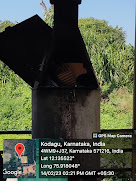Organic Farming And Waste Management
MODULE 3: ORGANIC FARMING AND WASTE MANAGEMENT
INTRODUCTION:
Mushrooms are unique in the produce section because they are fungi and not vegetables.
What we typically think of as a mushroom is the fleshy, fruiting, spore-bearing body of a
fungus.
Mushrooms form from a small structure called a primordium which grows on some type
of substrate. The primordium enlarges into an egg-shaped structure composed of hyphae,
called a “button.” Mycelium, called the universal veil, surrounds the button initially. As
the button grows, the veil breaks.
we went there and learnt so many things how to grow a mushroom and how to maintain all things and we enjoyed.
Organic Forming:
Organic farming, also known as ecological farming or biological farming, is an agricultural
system that uses fertilizers of organic origin such as compost manure, green manure,
and bone meal and places emphasis on techniques such as crop rotation and companion
planting. It originated early in the 20th century in reaction to rapidly changing farming
practices.
We had a guest talk on organic farming organized by our department. Dr. Harish M N and
Mr. Chengappa were the resource persons. Dr. Harish educated us about the various
practices of organic farming. He also informed us about poultry farming and the reasons
behind deteriorating health of human beings. We gained information about the different
macronutrients and micronutrients that a particular crop requires to produce the best yield.
The procedure was explained thus, A pure culture of
Pleurotus sp. is needed for inoculation on sterilized substrate. It takes 10-15 days for
mycelial growth on cereal grains. It has been reported that jowar and bajra grains are
superior over wheat grains.We learnt so many things.
Waste Management:
Waste disposal includes the processes and actions required to
manage waste from its inception to its final disposal. Waste can be solid, liquid, or gases and each type has different methods of disposal and
management.
In most areas of the world, sewage treatment is not done properly, leading to
eutrophication and beach closures. According to World Wildlife Fund (WWF) an estimate
of 8 million ton plastic ends up in oceans each year.
The aim of waste management is to reduce the dangerous effects of such waste on the
environment and human health. A big part of waste management deals with municipal solid
waste, which is created by industrial, commercial, and household activity. We went there ,there was a woman she explained everything about waste management system.
Conclusion:
Our college has installed a waste management system and we put all the waste into the
dumping pit and then we burn out the waste they explained us about the waste management
system.









Comments
Post a Comment